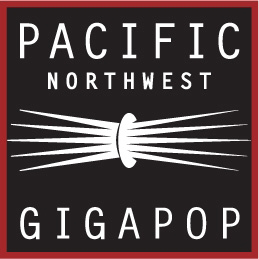International Collaboration results in successful transfer of Huygens space probe data from Australian telescopes to the Netherlands
AARNet News - 18 January 2005 - Nine organisations from four countries, with AARNet, Australia's Academic & Research Network, providing a coordinating role, were involved in the successful electronic transfer to the Netherlands of data collected by Australian telescopes from the Huygens space probe as it plunged through the clouds of Titan on 14 January 2005.
Titan is the largest of Saturn's 33 moons and the second-largest moon in our Solar System, with a diameter about one-and-a-half times that of our Moon. The surface of Titan is unlike anything encountered before. It has a thick atmosphere, and is thought to harbour organic compounds that may offer clues about the beginning of life on Earth.
The main objective of the Huygens mission was to drop the probe into Titan, to measure various properties of Titan's atmosphere and surface. A global international network of radio telescopes was also taking part in direct tracking of the transmission from the Huygens probe. Those involved included the Australian radio telescopes of CSIRO, based near Narrabri, Coonabarabran and Parkes in NSW; those of University of Tasmania, based in Hobart and Ceduna, South Australia, and 12 others based in China, Japan, and the United States.
Using a technique known as Very Long Baseline Interferometry (VLBI), this network of 17 radio telescopes collected data to pinpoint the European Space Agency's Huygens probe during its descent through Titan's atmosphere. The data from two Australian telescopes, Parkes and Mopra, were the first to be received for processing by the Joint Institute for VLBI in Europe (JIVE) in the Netherlands and used for quick end-to-end
diagnostics of the Huygens VLBI tracking performance prior to the data from all the telescopes being processed to determine the position of the probe to within a kilometre.
Data from the CSIRO telescopes were flown to the Australia Telescope National Facility (www.atnf.csiro.au). This data was then transferred to AARNet (www.aarnet.edu.au) in Sydney across a dedicated Gigabit Ethernet path on the CeNTIE network (www.centie.net) set up for this purpose. From there the data was sent to the Pacific North West GigaPoP's Pacific Wave facility in Seattle (http://www.pacificwave.net)
across the northern 10Gbps leg of SX TransPORT, a joint initiative between Southern Cross Cable Network and AARNet (www.aarnet.edu.au/news/sxtransport.html).
AARNet's router in Seattle was then connected to an optical switch of CANARIE, Canada's advanced Internet development organisation (www.canarie.ca) and a User Controlled LightPath (UCLP) was built from Seattle to JIVE using CANARIE's infrastructure to the MANLAN facility in New York; the Internet Educational Equal Access Foundation's trans-Atlantic capacity (www.ieeaf.org) to SURFnet in Amsterdam
(www.surfnet.nl); and a SURFnet Gigabit Ethernet path to JIVE at Dwingeloo (www.jive.nl).
In the first transfer, two 13 minute scans from Mopra (Coonabarabran) and "the Dish" (Parkes) were transferred at a data rate of about 450Mbps (equivalent to recording a full CD every 12 seconds) to JIVE where they were reformatted and 'correlated' to show perfect 'fringes' meaning that the observations had been successful. This news was applauded at the major European Space Agency press conference at the Mission Control Center on 15 January 2005, the day after the touch-down on Titan.
AARNet is working with members of the Astronomy community in Australia to provide gigabit capacity directly to the telescopes, which of necessity need to be in remote locations. AARNet is also working with the University of Hawaii, Southern Cross Cable Network, and other members of the international astronomy community to connect the
telescope complex at Mauna Kea in Hawaii to form the basis of a global astronomy initiative.
